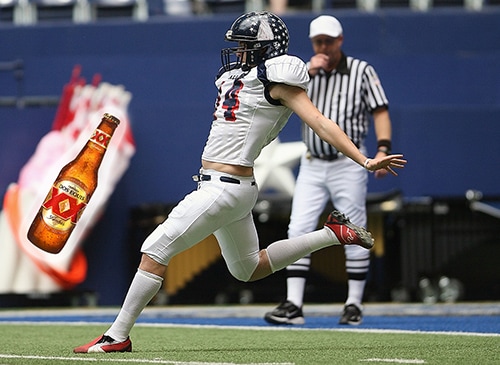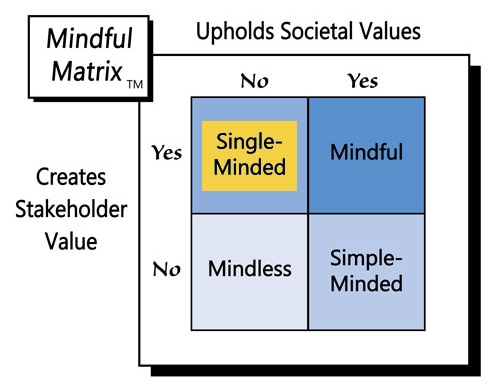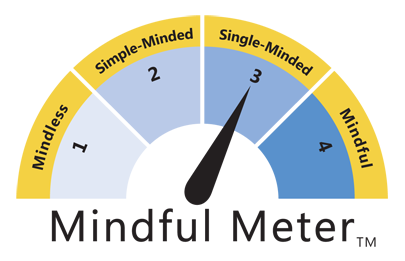The semifinal games and the national championship included a unique, football-themed commercial from Mexican beer maker, Dos Equis. In the spot, the company’s new “most interesting man in the world” carves a football out of what appears to be coconut and kicks a field goal between two giraffes, serving as goal posts. He ends the ad with a new catchphrase: “Stay thirsty mis amigos.”
Some may be sarcastically thinking, “So, a football game features a beer commercial—you’d better call the Associated Press!” True, we’re used to watching all sorts of sports (e.g., football, baseball, basketball) and seeing ads for alcohol. Often those games involve professional teams. For good reason, the NCAA places limits on alcohol advertising for collegiate sports, but beer commercials aren’t banned.
The NCAA allows the advertising of malt beverages, beer, and wine provided that they “do not exceed six percent alcohol by volume,” and provided that the commercials:
- Comprise no more than 60 seconds per hour of NCAA championship programming
- Include the tag “Drink Responsibly”
- Contain content deemed “respectful”
Dos Equis has 4.6% alcohol content, it’s commercial includes the “drink responsibly” disclaimer, and the ad isn't lewd or overtly disrespectful. So, it looks like the NCAA has abided by its own policy. At least it seems that way until one digs deeper into the Promotional Guidelines.
Although the ads conform to the letter of the law for alcohol, they really play against the overarching spirit of the policy, particularly in light of the reality of alcohol use on college and university campuses. Consider, for instance, these other important parts of the NCAA Promotional Guidelines:
- Ads are to be excluded that “do not appear to be in the best interest of higher education and student-athletes.”
- The ads should support, among other things, “physical fitness, student-athlete health and safety, . . . student-athlete welfare.”
- The ads should not “cause harm to student-athlete health, safety and welfare.”
Alcohol abuse is an epidemic in much of higher education. Almost 60% of college students drink, many underage, and about 20% of college students exhibit behavior indicative of Alcohol Use Disorder (AUD). Furthermore, two-thirds of those who drink engage in binge drinking, a pattern of rapid alcohol consumption that elevates blood alcohol concentration (BAC) to dangerously high levels, the kind associated with alcohol poisoning: “a serious — and sometimes deadly — consequence of drinking large amounts of alcohol in a short period of time. The Mayo Clinic adds that “Drinking too much too quickly can affect your breathing, heart rate, body temperature and gag reflex and potentially lead to a coma and death.”
What’s more, the consequences of alcohol abuse are not just physical. “About 1 in 4 college students report academic consequences from drinking, including missing class, falling behind in class, doing poorly on exams or papers, and receiving lower grades overall.” In other words, alcohol abuse can be a major obstacle to academic success and jeopardize a student’s future career.
It’s also extremely unfortunate that alcohol abusers tend to hurt others as well as themselves. “About 696,000 students between the ages of 18 and 24 are assaulted by another student who has been drinking.” In addition, “about 97,000 students between the ages of 18 and 24 report experiencing alcohol-related sexual assault or date rape.” Of course, there’s also the great risk of drunk driving accidents, miscellaneous injury, and vandalism—Remember what Olympic medalist Ryan Lochte did at a gas station in Rio while intoxicated?
Now, consider again the NCAA’s Promotional Guidelines and ask whether alcohol ads aired during collegiate sporting events are “in best interest of higher education and student-athletes,” “support physical fitness, student-athlete health and safety, . . . student-athlete welfare,” and do not “cause harm to student-athlete health, safety and welfare.” It’s hard to answer “yes” to any of these questions, let alone to all of them.
Given the pervasiveness of alcohol on many college campuses, its high levels of abuse among students, and the tragic consequences that abuse carries for the user and others, it’s stunning that the NCAA allows any alcohol advertising during its games. It’s even more mind-boggling that the College Football Playoff went a step further and enlisted Dos Equis as “The Official Beer Sponsor of the College Football Playoff,” a paradoxical distinction that further propagates the false compatibility of beer and books, drunkenness and diligence, wasted-ness and wellness.
Their partnership for the College Football Playoffs has likely profited both the NCAA and Dos Equis. Many others, however, come out on the losing end, particularly college students, who don’t need any more encouragement to engage in unhealthy and destructive alcohol-related behavior. There’s no such thing as drinking “responsibly” for those underage or otherwise caught in the grip of “the most commonly used addictive substance in the United States.” Mixing beer with any college sport is a contemptible case of “Single-Minded Marketing.”
Learn more about the Mindful Matrix and Mindful Meter.
Check out Mindful Marketing Ads and Vote your Mind!




 RSS Feed
RSS Feed